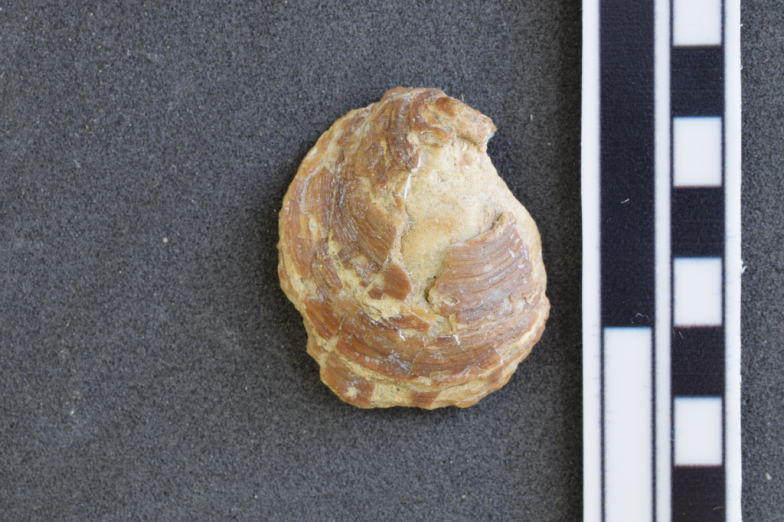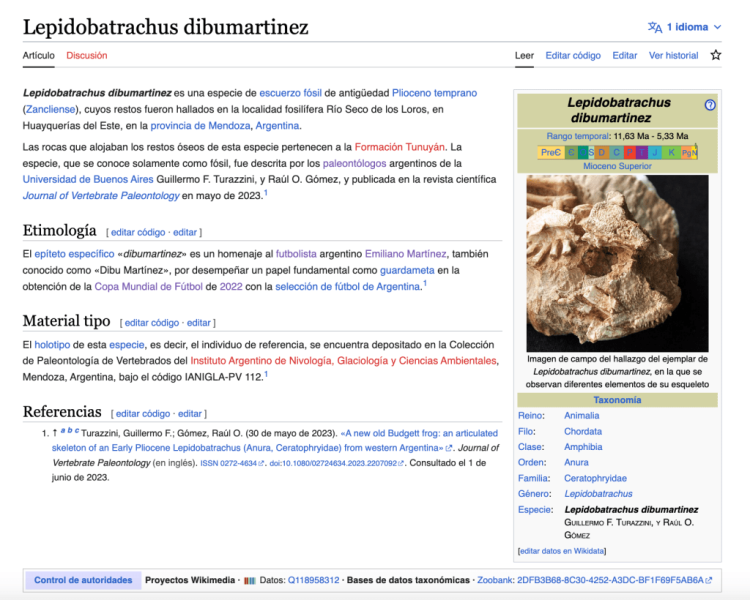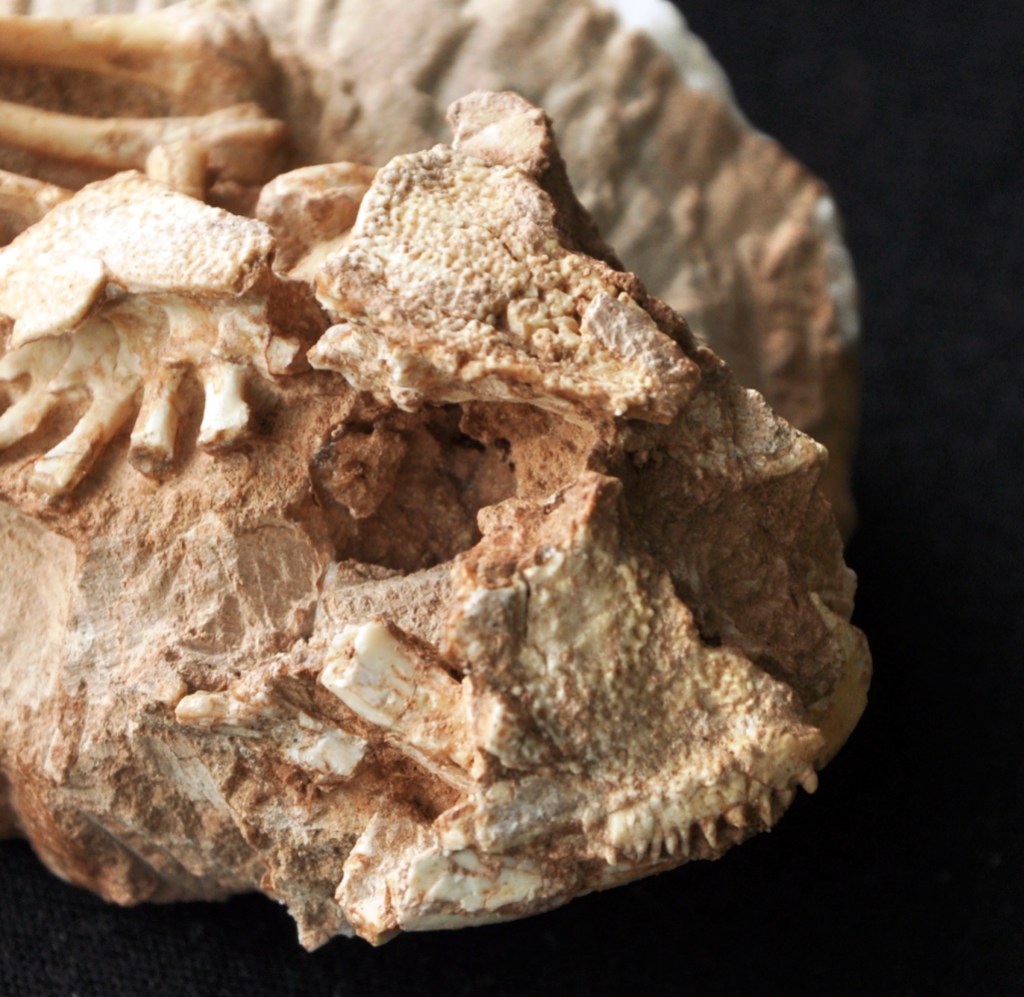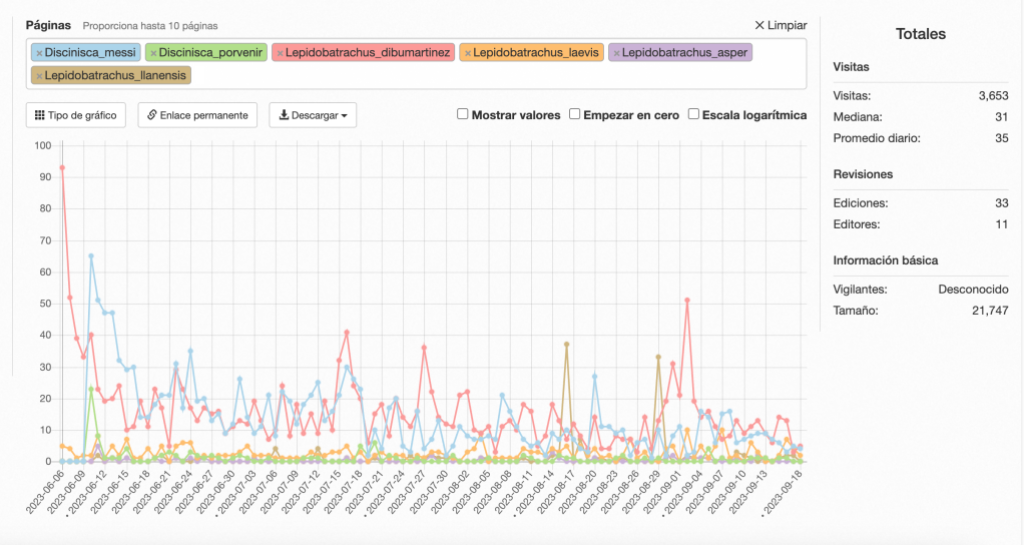What do Messi, the city of Gerli and the Lepidobatrachus species have in common? Wikipedia.

This story is part of a series of minimal stories created by Wikimedists, these are not large projects but rather anecdotes found in the work of editing or transiting this open movement. As a paleontologist and part of the Wikimedistas del Museo de La Plata I found in Wikipedia an ideal space to make visible the work and scientific work that paleontologists carry out daily.
Going through this profession I realized that science can use atypical resources to be visible or that in Argentina, most paleontologists are soccer fans. That football passion was further enhanced by the end of 2022 when Argentina won the Men’s Football World Cup.
So I’m going to tell you this love story between paleontology and football.
In May 2023, two scientific articles were published creating three fossil species whose names pay homage to Emiliano Dibu Martínez, goalkeeper of the Men’s Soccer Team winner of the Qatar 2022 World Cup, to Lionel Messi, for being one of the best soccer players in the world (I would say, the best in the entire history of this honorable sport but I would need a proper reference for this statement to stand) and to Club El Porvenir, based in the city of Gerli, between the neighborhood of Lanús and Avellaneda (something administratively impossible in Argentina).
Paleontologists Guillermo Turazzini and Raúl Gómez published a work about the discovery of a fossil specimen, which they called with its generic name (pre-existing) and the addition of a specific epithet “dibumartínez”. The species, Lepidobatrachus dibumartínez, pays tribute to Dibu, for his role in winning the world championship and for bringing that joy to our country.

The species is very well preserved and, something quite unusual in this type of fossils, many of its bones are articulated (that is, in relative positions similar to those they had in life). Guillermo gave in to the Wikimedistas del Museo de La Plata the photos of the discovery to illustrate the article and it didn’t take us long to upload those to Commons. We also added a reference in the tributes to Dibu article in Spanish-language Wikipedia.

Our peer Damián Pérez, from CENPAT, discovered and published in Ameghiniana two new species of brachiopods of the genus Discinisca. One of them, named Discinisca messi, pays tribute to Lionel Messi. We wrote an article and left a few lines in the football icon’s Wikipedia article, in the section social impact. The other species, Discinisca porvenir, is named after Club El Porvenir, of which Damián is a fan. El Porve (as the club is affectionately named by its fans) is in Primera Nacional B of Argentine soccer and is based in the City of Gerli, cut in the middle by the boundary between the districts of Lanús and Avellaneda (I found out by reading the Wikipedia article).
Since its creation, the page of the species Discinisca messi was visited 13 times more than its sister species, Discinisca porvenir. We find a similar pattern in the visits to the escuerzos: that of the Dibu has between 5 and 16 times the visits of the other escuerzos of the same genre, which are also alive, and therefore it is more expected that they will be searched in the encyclopedia (data obtained of Page Views). It is clear to us that the community reads more about paleontology if it associates these species with soccer icons. The love of soccer and paleontology come together in Argentina.


Do you want to know more about the work carried out by the Wikimedistas of the Museo de la Plata?
You can visit our social networks
Needed citations:
Our peers works:Pérez, Damián E.; Farroni, Nicolás D.; Mosquera, Aylén Allende; Cuitiño, José I. (12 de mayo de 2023). «First Discinid Brachiopods (Brachiopoda: Lingulida) from the Cenozoic of Patagonia (Gaiman Formation, Lower Miocene, Argentina)». Ameghiniana 60 (3). doi:10.5710/AMGH.23.01.2023.3544
Turazzini, Guillermo F.; Gómez, Raúl O. (30 de mayo de 2023). «A new old Budgett frog: an articulated skeleton of an Early Pliocene Lepidobatrachus (Anura, Ceratophryidae) from western Argentina». Journal of Vertebrate Paleontology doi:10.1080/02724634.2023.2207092.

Can you help us translate this article?
In order for this article to reach as many people as possible we would like your help. Can you translate this article to get the message out?
Start translation